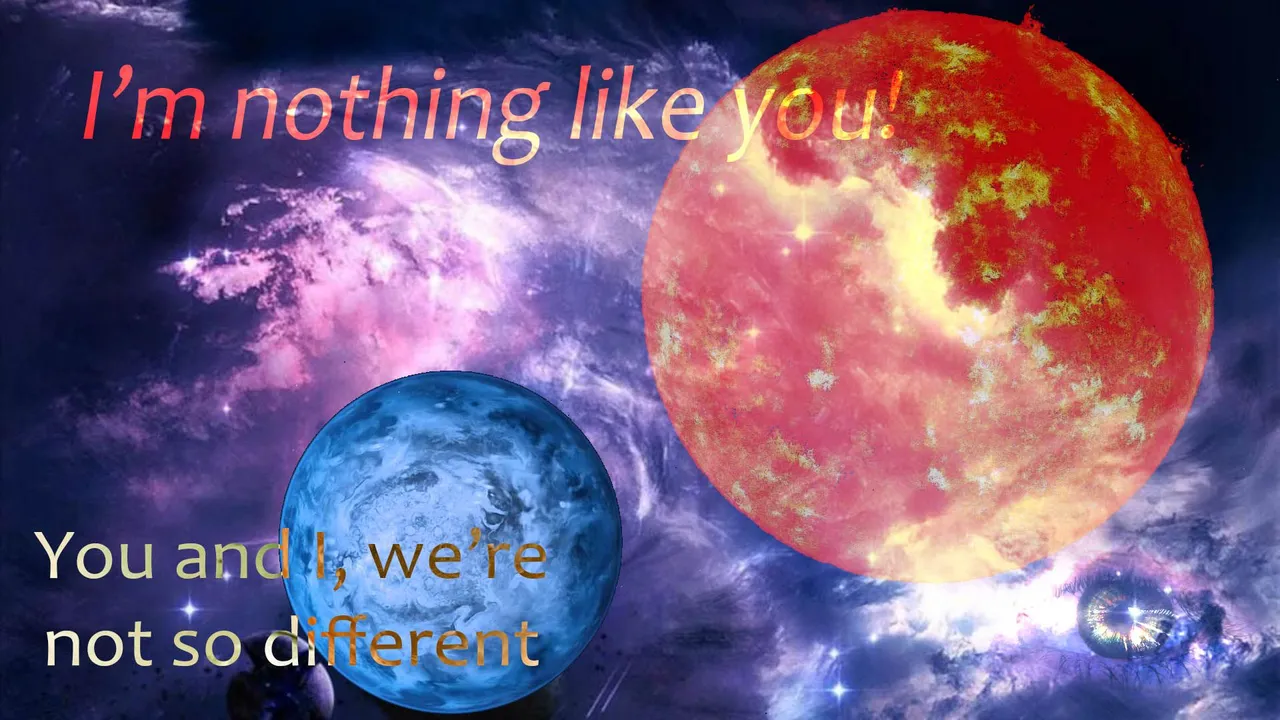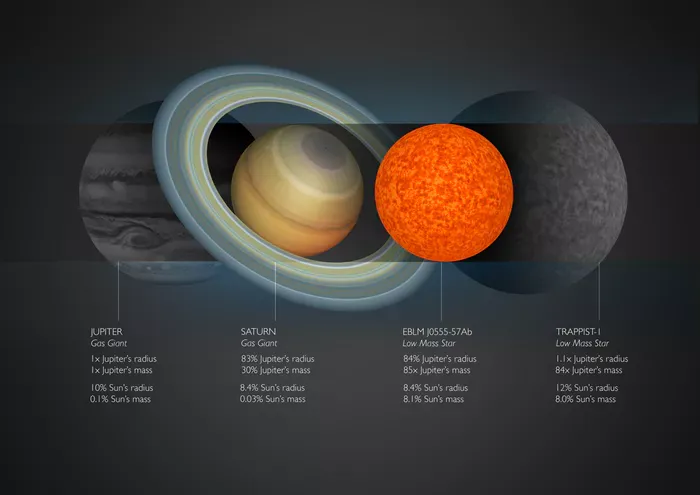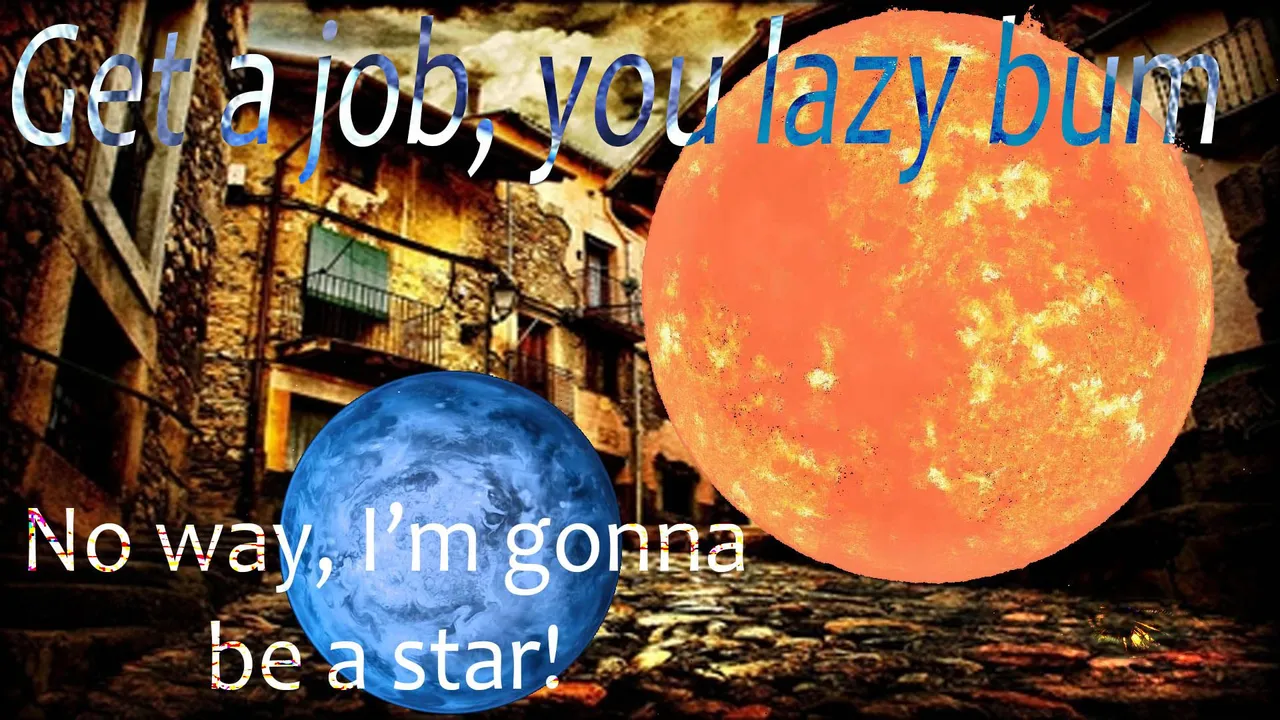
Star: An object in the sky that sends out its own light, generated by nuclear reactions in its center.
Planet: A celestial body moving in an elliptical orbit around a star.
Well that's the end of that. Clearly they're very different and my magnum opus is rendered obsolete.
Or is it?
Yes.
OR IS IT?
The thing is, we typically think of stars as huge, and planets as small. But nowhere in the definitions above mentions size or mass. And that's where things start to get complicated.
First, just out of interest, here's a list of planet types:
Binary planet, Carbon planet, Chthonian planet. Circumbinary planet. Coreless planet, Desert planet, Dwarf planet, Earth analog, Eccentric Jupiter, Exoplanet, Extragalactic planet, Gas giant, Helium planet, Hot Jupiter (pegasid), Hot Neptune, Ice giant, Ice planet, Inner planet, Iron planet, Lava planet, Mega-Earth, Mesoplanet, Mini-Neptune, Minor planet
Ocean planet, Outer planet, Plutoid, Protoplanet, Puffy planet, Pulsar planet, Rogue planet, Sub-brown dwarf, Sub-stellar object, Super-Earth, Super-Jupiter, Terrestrial planet, Trojan planet
Now a few of them stand out to me; Sub-brown dwarf, Sub-stellar object and Super-Jupiter. So let's investigate:
Failed Stars
A Brown dwarf is a small star, you might think. But it is actually defined as such:
A sub-stellar objects that occupy the mass range between the heaviest gas giant planets and the lightest stars
Another way its described is a 'failed star' because they are objects that often lack the mass to kick start fusion, and end up being a pointless blob in space, slowly oozing out its internal heat.

Their range, over four classes; M, L, T and Y brown dwarfs, is between 13 and 80 times the mass of Jupiter. Remember, mass and size are very different things. 13Mj, or Jupiter Masses is the minimum threshold needed for fusion to take place and can make the difference between a proper, burning star and a pile of rubble. But there's no hard rule as to the size of these objects.
Jupiter, for example, is only about 10 times smaller than our Sun, but its volume is 1,000 times less and thus the Sun's mass is 1.989 × 10^30 kg, compared to Jupiter at a pathetic 1.898 × 10^27 kg. Needless to say, our Sun is a whole lot more massive than Jupiter and any brown dwarves out there.
So brown dwarves, sub-stellar objects, super Jupiters or whatever you want to call them are not that impressive. A sub-brown dwarf is the same thing as a brown dwarf but even less interesting. Where brown dwarfs can fuse their natural abundance of heavy Hydrogen (Deuterium), sub-browns are below that 13Mj minimum, so no fusion can happen at all, and they are typically described instead as free-floating planets or planetary-mass brown dwarfs.
So even though brown dwarfs are often stars, they're also often not stars, and we're already blurring the lines between what we call a planet and what we call a star.
However.
The Cutest Star
In July this year, it was announced that the star EBLM J0555–57Ab, or BLAb, as I'm going to call it, has a mass 85 times that of Jupiter. However, its size is only 84% of Jupiter; almost exactly the same size as Saturn! This means in a quite literal sense, there are planets out there bigger than stars. BLAb is not a brown dwarf, since it is significantly over the mass threshold where fusion can kick start, it's simply way denser than Jupiter and other gas giants.

The Difference
So when all is said and done, there are planets bigger than stars, but there are also planets almost as massive as stars too. The largest Super Jupiters are defined as anything up to 80 times the mass of Jupiter - ie...A brown dwarf? Well, in any case, 13Mj is enough to create fusion, 12Mj is not. That's the entire difference between a star and a planet. Even though some planets that aren't stars could be 80Mj the mass, but just way bigger. Huh?
These mixed definitions are why Astronomers often confuse stars with planets, because Brown Dwarfs are not necessarily stars at all, but red, white, blue, orange, yellow and even black dwarfs certainly are classed as stars. When you start looking at big planets like Corot-3b (22Mj) they tend to describe them as 'planets or brown dwarfs', and the line in the sand defined as 'mass' can and does tend to overlap.
A very blurry line indeed.
Can planets become stars?
The natural follow up question.
Well I'm not sure how anybody would find an example of this happening, but the most massive 'planet or brown dwarf 'discovered so far is DENIS-P J082303.1-491201 b as a whopping 29 times the mass of Jupiter, easily enough to start fusion, but... it didn't.
Additionally, research from Michael C. Liu et al suggests that there is no fundamental difference between the formation of planets and stars, and they have in fact come across the rather newborn planet OTS44 and observed that it has a rather substantial disk of gas and accretion around it; the telltale signs that show up in the standard formation of stars. This gas has a combined mass of at least 30 earth's.
It's not too much to imagine this planet over time collecting enough mass, the same way a star would, to start fusion and convert itself into a star. So my answer for now is Yes, planets can become stars.
But you never will be, so get a real job.

Image Sources: